Welcome to Captains Curious, a weekly series of guest posts on the subject of Curiosity. This week: An encore from Captains Curious member Birdy Diamond! To learn about the series and the other Captains Curious, please click here.
Fear and curiosity cannot live in the same space
As my wonderfully wise hubby said in our “Curiosity in Times of the Tower” post, fear and curiosity tend not to be able to live in the same space.
Curiosity encourages you to take a breath, to look at things in a different light and from a different perspective.
So when you are in a place of fear, you can use curiosity to your advantage.
What fear is… and isn’t
Let’s stop for a moment and talk about what fear really is… and isn’t.
At the end of the day, fear is your body’s way of telling you that you are in the area of something new, a place you have never been before. Whether that place is physical, emotional, mental, or spiritual doesn’t really matter.
It’s new, and therefore it is scary.
Natural human reaction. Back in the day, it very nicely kept us from being eaten – which is, overall, a good thing.
Nowadays, while there are still things out there ready and willing to eat us, metaphorically and otherwise, the number of things that are new is nowhere near the same number as the things-that-are-new-that-are-also-dangerous. That number is distinctly in the minority.
And yet… we still have that same old fear reaction.
Curiosity rides to the rescue
What happens if you replace that fear with curiosity?
The literal thing is that you pause your emotional reaction and start thinking in a different way, from a different part of you.
The result is that you can breathe and analyze whether something is truly a threat to you, or it just appears that way because it is new.
Which is very important in Mike’s and my line of work.
Replacing the Fear with Curiosity
In our line of work, an expanded and expansive worldview is a must.
This means that one must be willing to not only suspend disbelief, but also to suspend the fear reaction in order to analyze what is really going on.
Curiosity is an excellent way to do both.
Curiosity lends itself quite nicely to the question-asking, the what-if thinking, that our profession requires.
Curiosity led us to making the explorations necessary to answer those questions, and the self-adjustments necessary to make those explorations.
The paranormal is a field filled with a lot of fear, almost by definition. If it is ‘beyond normal’, then it is new, therefore it is scary.
Except that it doesn’t have to be.
Two choices – Curiosity or Fear
You can hear a ‘pop’ or a knock that has no physical origin and be frightened, or you can hear the same sound and say ‘Hi!’, knowing that one of your friends has come to visit.
How did we get from fear to here?
Curiosity.
Curiosity led us to wonder if there was more out there, more than had been shared with us already.
Curiosity led us to explore a new career path, and to do the practice that let us get good at it.
Curiosity led us to calm our initial fear reactions long enough to find out whether new experiences would be really a danger or not.
Curiosity led, and continues to lead, us to explore further, to push the boundaries of what is possible.
Story Time
As an example, back in late 2008/2009, we came into contact with a being who is not native to this planet. Over the course of a number of conversations, we grew to become quite comfortable with the notion of talking to this being who is very different from us – physically, culturally, etc.
Curiosity led us to find the techniques and have the conversations that made understanding possible.
Even so, I was not yet ready to meet our friend in person. Something about that many fangs & scales in one space, no matter how friendly the being they were attached to, was just not something I was quite ready for yet and, embarrassed, I told him so.
Our friend understood. It was not time yet anyway, so it all worked out well.
Move forward to Hallowe’en 2009, when I met a gentleperson whom I am 95% sure was dressed in a Greys costume. Just out of curiosity, I asked myself “Self, I’m pretty sure this person is wearing a costume, and that’s not his own skin, but what if it were? Would you be okay with that?”
And to my delight, I discovered I would be.
Use curiosity to expand your worldview
Allow yourself to think of ‘What ifs?’ and realize that they don’t have to be made of Doom & Gloom.
Use curiosity in the face of fear to give yourself the chance to view things as they really are, and not just as you see them. :>
Use curiosity to dispassionately evaluate what is scaring you: Is it really a danger? Or is it just new?
Then act accordingly! :>
* * * * *
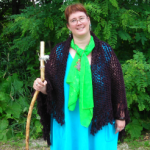 Birdy Diamond and her husband, Mike Diamond, two “nearly-normal people in a not-yet normal profession,” run Paranormal Lifestyle.com, a business and blog devoted to helping people “put the ‘normal’ into ‘paranormal’.” They also explore other applications for their channelling across the various blogs of The Avian Empire.
Birdy Diamond and her husband, Mike Diamond, two “nearly-normal people in a not-yet normal profession,” run Paranormal Lifestyle.com, a business and blog devoted to helping people “put the ‘normal’ into ‘paranormal’.” They also explore other applications for their channelling across the various blogs of The Avian Empire.
* * * * *
Post Image: Idea go / FreeDigitalPhotos.net
Would you like to receive more fun, thought-provoking posts and occasional announcements in your inbox? Click Here.
Would you like to submit a guest post on the subject of Curiosity? Send an email to susan {at} susanTblake {dot} com with the subject line: Captains Curious.



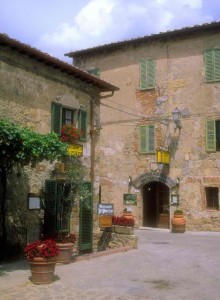

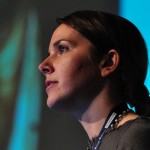
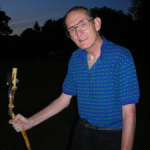
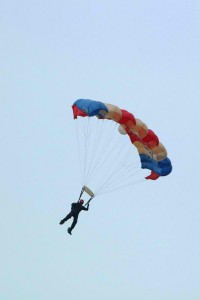
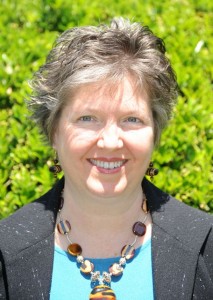



 Twitter
Twitter LinkedIn
LinkedIn Facebook
Facebook